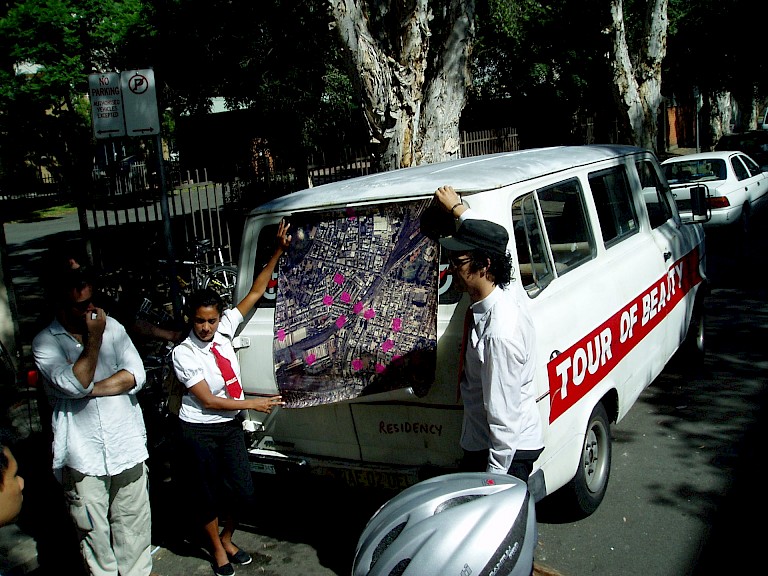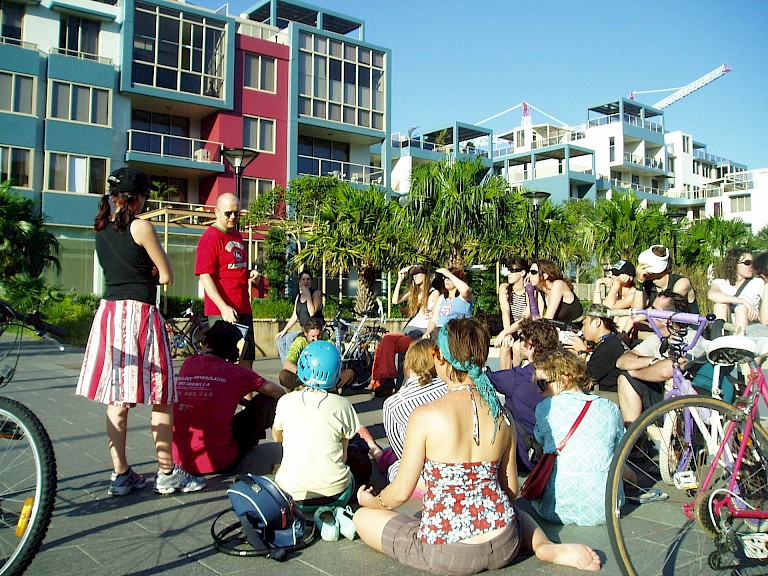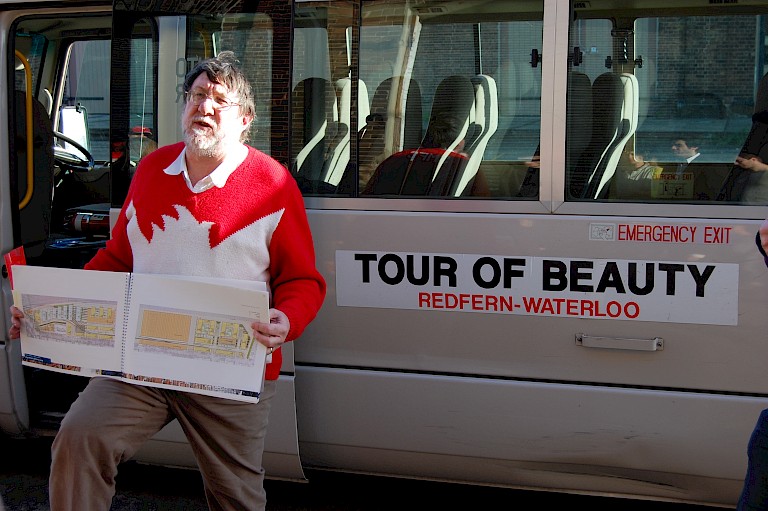



Numerous tours have taken place since the project launched in 2005. Between 2005 and 2009, approximately 15 tours were conducted. Each tour lasted for between four and five hours, during which time Squatspace artists would take groups of up to 30 ‘tourists’ on bicycle or by bus to predetermined sites, typically those earmarked for redevelopment. At each of the stops, tourists encountered locals who would share their perspectives on the area, its history and its future. In this process, many of the tourists became palpably aware of the existence of The Block, a dense space inhabited largely by indigenous peoples, rife with problems that can only be understood in terms of colonization and the contemporary challenges of decolonization.
The tour asked: what might be lost and what might be gained through the process of urban transformation? How could it be done better? And how would it affect actual people on the ground? Tour of Beauty is what the art historian and theorist Grant Kester would characterize as a ‘conversation piece,’ an instance of socially engaged art using dialogue as a stimulus/medium for change. While it cannot be said to have solved the problematic and conflicted relations between indigenous and non-indigenous Australians, Squatspace’s project did broker encounters between the two groups. It also raised awareness of the spatial dynamics and relational tensions in Redfern and Waterloo, while simultaneously confronting lofty, government-led revitalization initiatives with a critical dose of cynicism.
All copyright belongs to Shanghai Academy of Fine Arts, Shanghai University.



